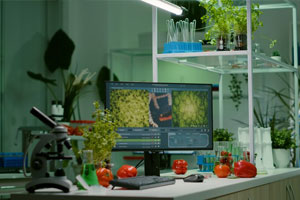Abstract
Gray mold, caused by Botrytis cinerea, is the main postharvest decay of table grapes. It can develop in the vineyard and spread rapidly among berries after harvest, during long distant transport, cold storage and shelf-life. In conventional agriculture, bunches are sprayed with fungicides after flowering, at pre-bunch closure, at veraison, and later, depending on the time of harvest. Harvested bunches are usually stored in the presence of sulfur dioxide. However, the use of synthetic fungicides and of sulfur dioxide is not allowed on organic grapes and the study of alternative methods to control postharvest decay has developed over several decades, along with the demand for safer storage methods. This review summarizes the results published in the field within the last 5 years (2006–۲۰۱۰). We can group these approaches as follows: (i) biocontrol agents; (ii) natural antimicrobials; (iii) GRAS type decontaminating agents; and (iv) physical means. Two biocontrol agents, Muscodor albus and Hanseniaspora uvarum, have shown equal or better effectiveness than conventional methods to control gray mold of table grapes in laboratory scale experiments. Currently, the bottleneck for the commercial use of biocontrol agents is that the registration process is comparable to that of fungicides, with similar costs but often with a narrower market. This delays their transition from experimental to practical use. Natural antimicrobials, such as salts, chitosan, and plant extracts, have demonstrated good results and often have been applied in various scales. Several GRAS-classified sanitizers have been tested to extend postharvest storage of table grapes, including acetic acid, electrolyzed oxidizing water, ozone, and ethanol. Physical technologies involving variations in temperature, UV-C irradiation, pressure or changing atmospheric composition, are all postharvest practices which require significant adaptation by an industry which is accustomed to minimal intervention during harvest. Overall, the use of ozone and of calcium chloride are two promising examples of treatments that are beginning to be adopted on a commercial scale. The requirements for the optimal treatment of grapes against gray mold before harvest or during storage are summarized.


